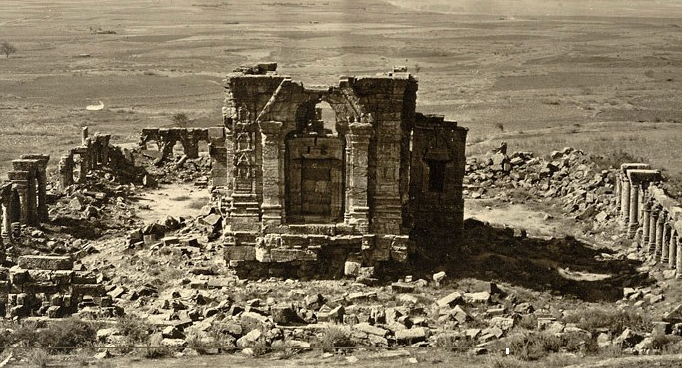INDIAN/ASIAN SLAVES
حَدَّثَنِي مُحَمَّدُ بْنُ إِسْمَاعِيل بْنِ إِبْرَاهِيمَ، قَالَ: حَدَّثَنَا يَزِيدُ، قَالَ: أَنْبَأَنَا هُشَيْمٌ، قَالَ: حَدَّثَنَا سَيَّارٌ أَبُو الْحَكَمِ، عَنْ جَبْرِ بْنِ عَبِيدَةَ، عَنْ أَبِي هُرَيْرَةَ، قَالَ: وَعَدَنَا رَسُولُ اللَّهِ صَلَّى اللَّهُ عَلَيْهِ وَسَلَّمَ غَزْوَةَ الْهِنْدِ، فَإِنْ أَدْرَكْتُهَا أُنْفِقْ فِيهَا نَفْسِي وَمَالِي، وَإِنْ قُتِلْتُ كُنْتُ أَفْضَلَ الشُّهَدَاءِ، وَإِنْ رَجَعْتُ، فَأَنَا أَبُو هُرَيْرَةَ الْمُحَرَّرُ
It was narrated that Abu Hurairah said: “The Messenger of Allah (ﷺ) promised that we would invade India (غَزْوَةَ الْهِنْدِ). If I live to see that I will sacrifice myself and my wealth. If I am killed, I will be one of the best of the martyrs, and if I come back, I will be Abu Hurairah Al-Muharrar.”
Volume 1, Book 25, Sunan an-Nasai’i, Abu Al-Nasai’i
India was subjected to endless Islamic forms of enslavement.
Constant and unrelenting terror struck the Hindu peoples as the Muslim armies crossed the Hindu Kush. From the conquest of Northern India onwards, the amount of slaves in India swelled to absurd levels as they as ‘pagans’ or ‘mushikun’ were allotted a contemptuous space in the Islamic mind below that of even Christians.
The number of the Muslims probably did not exceed several hundred-thousand. As early as the times of Iltutmish, mass enslavement supplied population for the cities. Most of the people among the urban class owned slaves. Even the most destitute possessed some slaves. Master-slave proportion in the Sultanate therefore, was one to many.
The Delhi Sultanate: A Slave Society or A Society with Slaves?, Fouzia Farooq Ahmed
The Delhi Sultanate was a product of slavery from beginning to end, being ruled by Turkic slaves who had been used as a racial army in India and had revolted successfully. In the Delhi Sultanate, a state by slaves who enforced global slavery onto others, Indian slaves were so numerous that they were compared to buying a piece of fruit.
The Arab historian al-Utbi in his 11th century book Tdrikh al-Yamirii, documented that Mahmud of Ghazni occupied Peshawar in 1001, and captured around 1,00,000 Hindu youths. Again in 1019, after his 12th raid into India, Mahmud returned with so many Hindu slaves that their market value per head was reduced to only 2-10 dirhams. Owing to such low prices traders arrived in droves from faraway places to buy them, and soon many Central Asian countries, such as Khurasan and Iraq, were filled with Hindus slaves.
Hindu slavery under Islamic dominion in India, Monidipa Bose Dey
Once again, slaves were not necessarily obtained mainly via war. Most were enslaved simply due to being unable to pay ridiculously high revenues and taxes:
The supply of slave population in the society was through multiple mediums. War, trade, tax, debt defaulting, and inheritance were among the major means of acquiring slaves. Also, in the times of Fīrūz Shāh recruitment en mass took place. The number of slaves was not static; it fluctuated in the Sultanate due to the internal political conditions, phenomena of war, international slave trade and relations with the neighbouring powers.
[…]
Horses were always many times more expensive than the high quality slaves.
[…]
Slaves were the human machines who, in the absence of mechanical technology and industries, were ubiquitously employed in large scale organized labour and dreary menial tasks. They were the back bone of most of the pre-modern economies and the Delhi Sultanate economy was no exception.
The Delhi Sultanate: A Slave Society or A Society with Slaves?, Fouzia Farooq Ahmed
Many of the construction projects of Central Asia cited as an ‘innovation of Islam’ such as the beautiful city of Samarkand were fuelled by Islamic enslavement of Indian artisans and construction workrs as construction workers who had the knowledge and aesthetic know-how to create buildings like this, a well that in Islam had well and truly run dry. This is no different to modern day Dubai and how it is constructed and created, whatsoever.
Successive dynasties did not change much about this where Hindus and even many Muslims were kept in an ambiguous position between un-slavery and slavery.
Slavery in Mughal India was restricted as a privilege of Muslim men enshrined in law. During the rule of ‘enlightened’ Shah Jahan, whose predecessor Akbar formally ‘tried’ to abolish industrial levels of slavery, many peasants ended up as slaves as they again could not afford an elaborate tax designed to starve them. Under the Islamic zealot Aurangzeb’s laws, Muslim men were entitled by law to have sex with any slave girls they owned or girls owned by other Muslim men, whether they consented or not. Nearly all slaves for foreign export ended up in Central Asia.
Taxes were even fulfilled in quantities of slaves to the Sultan.
By c.1600 slave labour formed a small component of the labour force, being restricted largely to domestic service (where free servants normally predominated) and concubinage. Akbar made notable attempts to forbid the trade in slaves and forcible enslavement. He freed all the imperial slaves, who “exceeded hundreds and thousands”. But domestic slaves and concubines remained an essential feature not only of the aristocratic household but also of the homes of lower officials and even ordinary people. In his verses the satirist Jafar Zatalli suggested that a small household could still comprise the master, his wife, a male slave, and a slave girl.
The World of Labour in Mughal India, Shireen Moosvi
Slaves in India were not simply Indian or Hindu, either:
Import and export both were carried out in the markets. Besides [a] large number of Indian slaves, of whom the Āsām slaves were most liked because of their strong physique, male and female slaves were imported from other countries including; China, Turkistan, Central Asia, Byzantine (Byzantium), Africa, Arabia, Persia, and Khurāsān. The eunuchs were imported from Bengal and Malya Islands.
The Delhi Sultanate: A Slave Society or A Society with Slaves?, Fouzia Farooq Ahmed
AUSTRONESIAN/MALAY SLAVES
Islam started penetrating into Malaysia and Indonesia around the 13th century. By the 18th century, more than half the population of the Sulu archipelago, around 500,000 people in total, were estimated to be slaves.
200,000 to 300,000 people were enslaved by Iranun and Banguinui slave masters.
Although we are taught ‘only Europeans’ went to wage war on random territories, an Arab explorer named Syarif Alkadrie from Yemen went on a rampage around the time of Napoleon enslaving endless Muslims in Borneo and established the Pontianak Sultanate.
One object of Islamic predation was Japan. It is estimated that hundreds of thousands of Japanese girls were abducted from the coasts of the Shogunate and even into the imperial period to be enslaved by Muslims in Indonesia, Malaysia and among the Cham peoples of Vietnam.
Once again, however, this was not a one-way trade. One modern Sultan of Saudi Arabia, Ali bin Hussein, had 20 to 30 Javanese girls in his own harem.

